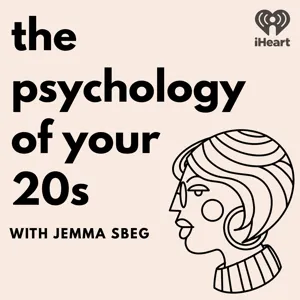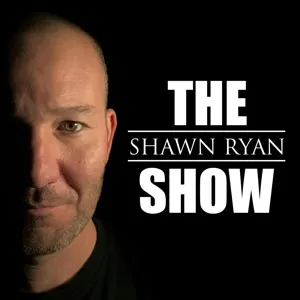Podcast Summary
Discussing Childhood Trauma's Impact: Childhood trauma can have long-lasting impacts, seek support if needed, affordable dental care with Pronamel, and Canva for quick presentations.
Taking care of our teeth is crucial as we only get one set, and Pronamel toothpaste and mouthwash can help repair acid-weakened enamel. Kroger brand products offer proven quality at affordable prices, making shopping a win. Canva presentations can help generate slides quickly for work presentations. Childhood trauma can have long-lasting impacts on our lives, and if you're dealing with such experiences, ensure you're in a safe space and reach out for support if needed. In this episode, we'll discuss childhood trauma in a clinical perspective, mentioning instances of physical and sexual abuse, violence, substance abuse, self-harm, and suicide. Remember, I'm not a clinical professional, so seek professional help if required. Trauma is a vast topic, and in this episode, we'll focus on its impact during childhood when we're most vulnerable.
Understanding the Impact of Childhood Trauma: Childhood trauma can affect mental and physical health, relationships, values, and self-esteem. Healing comes from feeling safe, empowered, and supported.
Childhood trauma, which can result from overwhelming experiences of danger, fear, and powerlessness, can have long-lasting impacts on mental and physical health, relationships, values, and self-esteem. Healing, however, comes from feeling safe, empowered, and supported. It's essential to understand how childhood trauma influences us and recognize its subtle effects. Trauma is a subjective experience, and not all traumatic events are the same. Resources like the DSM and the Adverse Childhood Experiences Study can provide more concrete definitions and insights into trauma. Remember, healing is possible, and it begins with understanding and empowerment.
DSM's Ambiguous Definition of Trauma: The DSM primarily focuses on PTSD for traumatic experiences, but trauma can come from various sources, and definitions like ACEs offer a more comprehensive understanding of trauma's impact on individuals.
The Diagnostic and Statistical Manual of Mental Disorders (DSM), which is used by clinicians worldwide to diagnose and treat mental health conditions, does not have a clear definition of trauma and its different types. Instead, it primarily focuses on post-traumatic stress disorder (PTSD) as an all-encompassing diagnosis for various traumatic experiences. However, it's important to note that trauma can come from various sources, including childhood neglect, bullying, and intergenerational trauma, not just major events like wars or accidents. Additionally, the DSM requires a singular traumatic event for a PTSD diagnosis, and symptoms must last for a month and interfere with multiple areas of life. As research on trauma continues to evolve, there are debates about whether the DSM's definition of trauma is too specific and outdated. New ways of describing trauma, such as adverse childhood experiences (ACEs), have emerged, focusing on the impact of childhood trauma on individuals' lives from childhood to adulthood. These definitions and categories are crucial for better understanding and addressing the complex nature of trauma.
Types and Effects of Childhood Trauma: Childhood trauma includes personal, environmental, major, accumulating, vicarious, intergenerational, and collective experiences. It can have lasting impacts on individuals and communities.
Childhood trauma comes in various forms and can have long-lasting effects. Personal traumas include emotional, physical, and sexual abuse, often from someone known to us. Environmental traumas involve witnessing family struggles or external events. Major traumas are one-off, significant incidents, while accumulating traumas, such as bullying or poverty, can build up over time. Trauma can occur throughout the lifespan, with examples including vicarious trauma, intergenerational trauma, and collective trauma. Intergenerational trauma is passed down through generations, while collective trauma affects large groups of people. It's important to remember that all types and degrees of trauma matter, as they can significantly impact individuals and communities.
Childhood trauma and its complex effects: Childhood trauma, including emotional neglect, can lead to complex responses, such as feelings of self-blame, powerlessness, freeze response, agitation, hyper-vigilance, and dissociation.
Trauma is a complex and nuanced experience that can result from various events and experiences, not just those that lead to a PTSD diagnosis. Childhood trauma, particularly emotional neglect within family units, can be especially harmful due to children's strong attachment needs. Neglect and abuse in these situations can lead to complex trauma responses, including feelings of self-blame and powerlessness. Children's brains are highly malleable, and they may respond to traumatic events with a freeze response, leading to feelings of agitation, hyper-vigilance, and dissociation. It's important to recognize that anything that causes significant distress can be a traumatic event, and it's essential to validate and address these experiences.
Childhood trauma's impact on brain development and overall wellbeing: Childhood trauma can lead to toxic stress, affecting brain development, sensitivity to future stress, and causing issues like depression, anxiety, substance abuse, dissociation, memory loss, identity problems, and relationship and work-related issues. Seeking help after traumatic events is crucial to prevent long-term problems.
Childhood trauma can have profound and lasting impacts on our brains, bodies, and overall wellbeing. Trauma, particularly during childhood, can lead to toxic stress, which can affect brain development and sensitivity to future stress. This can result in issues like depression, anxiety, and substance abuse. Dissociation, a natural coping mechanism for psychological overwhelm, can also become a long-term issue, leading to memory loss, identity problems, and relationship and work-related issues. It's crucial to recognize these potential impacts and seek help in the aftermath of traumatic events to prevent long-term problems.
Childhood Trauma's Impact on Brain Development and Relationships: Childhood trauma can negatively impact self-esteem, attachment styles, and brain development, leading to heightened fear responses, impaired memory, and abnormal brain development. It can also impact future relationships. Not all children who experience trauma will suffer these consequences, but support and resources are crucial for healing and resilience.
Childhood traumas, including abuse, neglect, divorce, and death, can significantly impact a child's self-esteem, attachment styles, and brain development. These experiences can lead to heightened fear responses, impaired memory, and abnormal brain development. Trauma can also impact a child's ability to form healthy relationships in the future. However, it's important to note that not all children who experience trauma will suffer these consequences. Many people are able to overcome childhood trauma and live healthy, resilient lives. It's crucial to remember that trauma is not a positive experience and should not be romanticized as a necessary step towards resilience or emotional intelligence. Instead, we should focus on providing support and resources for those who have experienced trauma to help them heal and thrive.
Factors affecting the impact of childhood trauma: Individuals' responses to childhood trauma can vary based on neurological makeup, temperament, cultural background, caregivers' reactions, and trauma severity and nature.
While childhood trauma can significantly impact individuals' lives, not everyone responds in the same way. Some factors that may contribute to more positive outcomes include an individual's neurological makeup and temperament, cultural background, and the reactions of caregivers or communities to the trauma. The severity, closeness, and nature of the trauma also play a role. For example, a serious trauma experienced at a young age, especially if it involves a caregiver, can have long-lasting effects. Conversely, minor traumas may have less impact, depending on the individual's developmental stage and support system. Ultimately, understanding these factors can help us better support individuals who have experienced childhood trauma and promote resilience.
Community Support Plays a Crucial Role in Coping with Childhood Trauma: A supportive community can aid in recovery and reduce risks of disorders, while unsupportive responses can increase risks of PTSD, depression, anxiety, and dissociative disorders. Resilience, mastery, and social support are crucial in determining the outcome of a traumatic event.
The impact of a traumatic event on an individual can vary greatly depending on their past experiences and the support they receive from their community. Those who have experienced significant trauma in the past may be better equipped to cope due to developed coping mechanisms, even if they are negative. On the other hand, individuals with no prior trauma experience may struggle more due to a lack of understanding and resources. The response from one's community plays a crucial role in the long-term effects of childhood trauma. A supportive community can reduce the risks of developing disorders and aid in recovery, while unsupportive responses can increase the risk of PTSD, depression, anxiety, and dissociative disorders. Additionally, factors such as resilience, mastery, and social support are crucial in determining the outcome of a traumatic event. Mastery, or the belief in one's ability to control their circumstances, can help individuals overcome trauma, while social support provides a protective factor against the negative effects of trauma.
Healing from childhood trauma: Effective treatments like cognitive behavioral therapy and prolonged exposure can help individuals learn healthier ways to respond to triggers and traumatic memories, creating a safe and supportive environment is crucial in healing, and seeking professional help is important.
While childhood trauma can have profound and lasting impacts on mental health, there are effective treatments and coping mechanisms available. Cognitive behavioral therapy, such as cognitive restructuring and prolonged exposure, can help individuals learn healthier ways to respond to triggers and traumatic memories. Prolonged exposure therapy, in particular, can teach individuals that they are no longer in danger when faced with reminders of past traumas, and can help them develop positive reactions instead. Creating a safe and supportive environment is also crucial in healing from trauma, and can help break the cycle of intergenerational trauma. If you have experienced childhood trauma, it's important to seek professional help and explore these treatment options.
Healing from Childhood Trauma and Celebrating Diversity: Despite childhood trauma, the brain can heal and adapt with support, leading to fulfilling lives. Diversify routines by discovering Black-led products during Black History Month, and use tools like Canva's AI-powered presentations for efficient work.
While childhood trauma can significantly impact a person's life, it doesn't define their future. The brain's ability to adapt and heal is remarkable, especially with the right support system and self-care practices in place. Trauma survivors can lead fulfilling and loving lives, just like anyone else. It's essential to remember that hope exists for the future, and seeking help from mental health professionals is a brave and important step towards healing. Furthermore, taking care of our physical health, such as our teeth, is crucial, as we only get one set. Using products like Pronamel toothpaste and mouthwash can help repair acid-weakened enamel. During Black History Month, Walmart is celebrating Black-led products and offering giveaways at select locations. It's an excellent opportunity to discover new products and diversify daily routines. Lastly, for those who work for themselves or need to create presentations quickly, tools like Canva's AI-powered presentations can be a game-changer. They generate captivating slides in seconds, allowing users to customize and create impressive presentations effortlessly.



